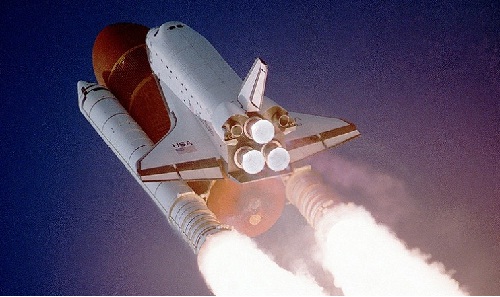NASA Uses Integrated Multi-satellitE Retrievals for GPM (IMERG) to Reveal Hurricane Willa’s Rainfall (Update: 26 October 2018)
NASA has used its Integrated Multi-satellitE Retrievals for GPM (IMERG) data to calculate the amount of rainfall generated from Eastern Pacific Ocean’s Hurricane Willa.
According to NASA, Tropical Depression 24E was formed on October 20, 2018, and it later intensified to become tropical storm Willa. This category five hurricane generated winds of over 161 mph (140 knots) on October 22. On October 24, Willa made landfall in Sinaloa, Mexico. By that time, its intensity had decreased to category three. The IMERG rainfall accumulation data showed that Willa produced rainfall totals greater than 20 inches (508 mm) in the Pacific Ocean off Mexico’s coast.
Continue Reading this Article.
NASA Tests Parachute for Mars 2020 Mission (October 26, 2018)
NASA News: NASA has tested the parachute for Mars 2020 mission. A 58-foot-tall Black Brant IX sounding rocket carried the payload, which was separated from the rocket less than 2 minutes after the launch of the rocket. The payload then started its dive back through Earth’s atmosphere. After reaching the appropriate height and Mach number, the payload deployed a parachute. Within four-tenths of a second, the 180-pound parachute billowed out from being a solid cylinder to being fully inflated. The Mars 2020 project’s parachute-testing series, ASPIRE, is managed by the NASA JPL, with support from NASA’s Langley Research Center in Hampton, Virginia, and NASA’s Ames Research Center in Mountain View, California.
Read more about this NASA News.
NASA Invites Media to See Orion Test Capsule and Recovery Hardware (Update: October 26, 2018)
NASA News: NASA has invited media to view a test version of NASA’s Orion spacecraft, at 9 a.m. PST Wednesday, Nov. 7, at Naval Base San Diego. The space agency will also demonstrate the hardware that will be used to recover the spacecraft on its return from space. Team members involved with recovery operations from NASA and the Department of Defense will be available to speak with media.
NASA’s Aqua Satellite Captures Super Typhoon Yutu’s Oblong Eye (Update: 26 October 2018)
On October 25 at 1:30 p.m. CHST (local time, Guam) the Moderate Resolution Imaging Spectroradiometer (MODIS instrument) aboard Aqua captured a visible image of powerful super Typhoon Yutu as it moved through the Philippine Sea. The images showed Yutu’s eye to be oblong. Yutu was symmetric with an open 19 nautical-mile-wide eye surrounded by very thick bands of powerful thunderstorms circling the center. By October 26, the images showed that the eye had become cloud-filled.
NASA to Host Briefing on November Mars InSight Landing (Update: October 25, 2018)
On October 31, 2018, NASA will host a media briefing on upcoming landing of Mars Insight (Interior Exploration using Seismic Investigations, Geodesy and Heat Transport) Mars lander, the first-ever mission to study the heart of Mars. The briefing will be held at NASA Headquarters in Washington, and will be aired live on NASA Television, the agency’s website and the NASA InSight Facebook page.
NASA’s GPM Satellite Shows Powerful Super Typhoon Yutu Hitting Northern Marianas (Update: October 25, 2018)
NASA’s GPM Core observatory satellite captured an image of Super Typhoon Yutu when it flew over the powerful storm just as the center was striking the central Northern Mariana Islands north of Guam. Early Thursday, Oct. 25 local time, Super Typhoon Yutu crossed over the U.S. commonwealth of the Northern Mariana Islands. It was the equivalent of a Category 5 hurricane. The National Weather Service in Guam said it was the strongest storm to hit any part of the U.S. this year.
NASA Announces Awarding of Library and Information Services Technical Support Contract (Update: October 25, 2018)
NASA News: NASA has awarded the Goddard Library and Information Services Technical Support (GLISTS) contract to Select Federal Services, LLC of Sweetwater, Tennessee. According to NASA, this is a firm-fixed-price indefinite-delivery indefinite-quantity (IDIQ) contract with a base value of $1,078,104.75. The contract also contains two Options, for a total contract value of $15,483,685.55. The period of performance is from December 1, through November 30, 2023.
NASA Invites Media to Learn About Urban Air Mobility (Update: October 25, 2018)
NASA is inviting media to attend a two-day Urban Air Mobility Grand Challenge Industry Day beginning Nov. 1, at the Seattle Marriott Waterfront. The event is sponsored by NASA’s Aeronautics Research Mission Directorate’s (ARMD). During the event, media will hear about NASA’s UAM vision and how it will revolutionize mobility within metropolitan areas. Reporters also will have the opportunity to talk with NASA’s UAM project team.
NASA Satellite Shows Willa Dissipated Over Mexico (Update: October 24, 2018)
NASA satellite data showed a shapeless area of clouds over northeastern Mexico on Oct. 24 where former hurricane Willa has dissipated. NOAA’s GOES-West satellite captured a visible image of Willa’s remnant clouds. NOAA’s GOES-West satellite provided a visible image of Willa’s remnant clouds. Satellite images and surface observations indicate that Willa’s surface circulation has dissipated over northeastern Mexico.
NASA Satellite Sees Supertyphoon Yutu’s Eye Pass Over Tinian (Update: October 24, 2018)
NASA Latest News: On Oct. 24, the National Weather Service or NWS in Tiyan, Guam issued the warning that “Catastrophic winds for Tinian and Saipan are imminent” as the eye of Super typhoon Yutu neared both islands. NASA-JAXA’s GPM satellite and NOAA’s NOAA-20 satellite provided a look at the heavy rainfall and the structure and eye of the storm. Maximum sustained winds in the eye wall are 180 mph or stronger making Yutu a dangerous category 5 super typhoon.
NASA’s InSight to Probe the Red Planet While Standing Still (Update: October 24, 2018)
According to the American Space Agency, NASA’s InSight spacecraft—after touching down in November—will spread its solar panels, unfold a robotic arm … and stay put. Unlike the space agency’s rovers, InSight is a lander designed to study an entire planet from just one spot.
This sedentary science allows InSight to detect geophysical signals deep below the Martian surface, including marsquakes and heat. Scientists will also be able to track radio signals from the stationary spacecraft, which vary based on the wobble in Mars’ rotation. Understanding this wobble could help solve the mystery of whether the planet’s core is solid.
NASA Satellite Shows Post-Tropical Depression Vicente Inland (Update: October 23, 2018)
On October 23, NOAA’s GOES-West satellite provided a visible image of Vicente. The storm appeared almost shapeless, but there was a larger concentration of thunderstorms near its circulation center. Vicente degenerated into a remnant low while moving inland over the Mexican state of Michoacan.
NASA’s Juno Mission Finds Jupiter Wave Trains (Update: 23 October, 2018)
Massive structures of moving air that appear like waves in Jupiter’s atmosphere were first detected by NASA’s Voyager missions during their flybys of the gas-giant world in 1979. The JunoCam camera aboard NASA’s Juno mission to Jupiter has also imaged the atmosphere. JunoCam data has detected atmospheric wave trains, towering atmospheric structures that trail one after the other as they roam the planet, with most concentrated near Jupiter’s equator.
The JunoCam imager has resolved smaller distances between individual wave crests in these trains than ever seen before. This research provides valuable information on both the dynamics of Jupiter’s atmosphere and its structure in the regions underneath the waves.
Read more about this NASA News.
NASA Invites Media for Event Marking the Arrival of Orion’s European Service Module (Update: October 23, 2018)
NASA News: NASA is inviting media to its Kennedy Space Center in Florida at 9 a.m. EST Friday, Nov. 16, for an event marking the arrival from Bremen, Germany, of the European Service Module – the powerhouse that will supply NASA’s Orion spacecraft with electricity, propulsion, thermal control, air and water.
NASA’s Spitzer Space Telescope shows the Cat’s Paw Nebula (Update: October 23, 2018)
NASA’s Spitzer Space Telescope has captured an image of Cat’s Paw Nebula, so named for the large, round features that create the impression of a feline footprint. The nebula is a star-forming region in the Milky Way galaxy, located in the constellation Scorpius. Estimates of its distance from Earth range from about 4,200 to about 5,500 light-years.
Framed by green clouds, the bright red bubbles are the dominant feature in the image, which was created using data from two of Spitzer’s instruments. After gas and dust inside the nebula collapse to form stars, the stars may in turn heat up the pressurized gas surrounding them, causing it to expand into space and create bubbles.
Read more about this NASA News.
NASA’s Aqua Satellite Provided an Infrared View of Hurricane Willa (Update: October 23, 2018)
On Oct. 22, NASA-NOAA’s Suomi NPP satellite captured a visible image of Hurricane Willa when it was battering western Mexico with heavy rainfall, rough surf and strong winds. The image showed powerful thunderstorms circling a cloud-filled eye and the storm stretched from Sinaloa state south to Michoacan state.
NASA Invites Media to Visit Nanocomp Technologies, Discuss Space Technology Partnership (Update: October 23, 2018)
NASA has invited media to tour Nanocomp Technologies in Merrimack, New Hampshire, at 10:45 a.m. EDT Monday, Oct. 29, and learn about a nanotechnology that could enable lighter spacecraft and launch vehicles, making spaceflight and exploration more affordable.
Media may join Reuter and Bowles, along with U.S. Sen. Jeanne Shaheen of New Hampshire, Scott Wright, president of advanced materials at Huntsman, and John Gargasz, managing director of Nanocomp, on a tour of the facility to get a firsthand look at the work being done to mass manufacture and commercialize the company’s innovative, ultra-lightweight materials. Following the tour, Reuter, Shaheen and Gargasz will give brief remarks and take questions.
Read more about this NASA News.
NASA-NOAA’s Suomi NPP Satellite Catches Typhoon Yutu Strengthening, Guam on Alert (Update: October 23, 2018)
On October 22, 2018, the Visible Infrared Imaging Radiometer Suite (VIIRS) instrument aboard NASA-NOAA’s Suomi NPP satellite passed over the western Pacific Ocean and captured a visible image of Yutu. VIIRS revealed a well-organized storm, and showed powerful thunderstorms around the center of circulation and in thick bands spiraling into the center from the northern and southern quadrants.
NASA CubeSat’s First Image of Mars (October 22, 2018)
NASA Space News: One of the twin MarCO CubeSats snapped an image of Mars on October 3, 2018. This is the first image of the Red Planet ever produced by this class of tiny, low-cost spacecraft. The two CubeSats are officially called MarCO-A and MarCO-B but nicknamed “EVE” and “Wall-E” by their engineering team.
A wide-angle camera on top of MarCO-B produced the image as a test of exposure settings. The MarCO mission, led by NASA’s Jet Propulsion Laboratory in Pasadena, California, hopes to produce more images as the CubeSats approach Mars ahead of Nov. 26.
Get more information about this news.
NASA and Japan’s GPM Satellite Probe Dangerous Hurricane Willa (Update: October 22, 2018)
NASA Space News: On Oct. 22, the National Hurricane Center or NHC noted that “Will became a potentially catastrophic category 5 hurricane on the Saffir-Simpson hurricane wind scale and is expected to produce life-threatening storm surge, wind, and rainfall over portions of west-central and southwestern Mexico.”
Willa formed on Saturday, Oct. 20 and quickly became a tropical storm. By 5 p.m. EDT, Willa strengthened into a major hurricane and continued to strengthen.
NASA Tracks Tropical Storm Yutu, Warnings Posted (Update: October 22, 2018)
NASA-NOAA’s Suomi NPP satellite passed over the Northwestern Pacific Ocean and captured a visible image of Tropical Storm Yutu as warnings were posted. A typhoon watch is in force for Tinian and Saipan and a tropical storm watch is in force for Rota.
The National Weather Service in Tiyan, Guam noted that residents of Guam, Alamagan, Pagan and Agrihan should continue to monitor the progress of Tropical Storm Yutu.
NASA Satellite Views Tiny Tropical Storm Vicente Near Southwestern Mexico’s Coast (Update: October 22, 2018)
NASA News: On October 21, 2018, NASA-NOAA’s Suomi NPP satellite captured a visible image of Tropical Storm Vicente that showed it was a small storm. Vicente developed on Friday, Oct. 19 as Tropical Depression Twenty-Three-E (TD 23E). TD23E formed about 85 miles (135 km) west-southwest of Puerto San Jose Guatemala and moved west-northwest while intensifying. Later in the day TD23E strengthened into a tropical storm and was renamed Vicente, but the storm was moving slowly. Because of the slow movement, heavy rains fell over portions of El Salvador, Guatemala and southeastern Mexico. Vicente then moved west
NASA Invites Media to Northrop Grumman Cygnus Launch from Virginia (Update: October 17, 2018)
NASA News: NASA is inviting media to Northrop Grumman Cygnus Launch from Virginia. Northrop Grumman personnel load supplies and experiments into the Cygnus cargo spacecraft in the payload processing facility at NASA’s Wallops Flight Facility in preparation for the company’s 10th commercial resupply services mission, currently scheduled for no earlier than Nov. 15, 2018. Northrop Grumman is targeting liftoff, on its Antares launch vehicle, no earlier than 4:49 a.m. EST Nov. 15 from the Mid-Atlantic Regional Spaceport’s Pad-0A at NASA’s Wallops Flight Facility on Wallops Island.
Get more information about NASA News.
Caltech’s Frances Arnold Wins Nobel Prize (Update: October 16, 2018)
NASA Space News: Frances Arnold, the Linus Pauling Professor of Chemical Engineering at Caltech, has won the 2018 Nobel Prize in Chemistry. The prize honors her pioneering work in creating new, improved enzymes in the laboratory using the principles of evolution. Arnold shares the prize with two other scientists.
Arnold’s bio has an abundance of academic milestones and stellar awards. She was the first woman to receive the 2011 Charles Stark Draper Prize from the National Academy of Engineering. She is also the first woman and one of just a few individuals elected to all three branches of the National Academies: for Medicine, Sciences and Engineering.
The ‘Claw Game’ on Mars: NASA InSight Plays to Win (Update: October 16, 2018)
NASA’s InSight lander, slated to arrive on Mars Nov. 26, 2018, will be the first mission to use a robotic arm to grasp instruments from the spacecraft and release them into place on another planet. These instruments will help scientists study the deep interior of Mars for the first time.
Scientists to Discuss and Debate Future Landing Site for NASA’s Mars 2020 Rover (Update: October 15, 2018)
Hundreds of scientists will gather later this week at a three-day workshop in Los Angeles to discuss about the future landing site for NASA’s Mars 2020 Rover. NASA’s Mars 2020 mission aims to search signs of habitable conditions and past microbial life on Mars in the ancient past. NASA Mars rover will carry with scientific instruments to collect rock and soil samples from the Red Planet. The sample collection system will set these samples aside in a “cache” on the surface of Mars, and hopefully a future mission would potentially bring these samples to Earth. The three-day workshop will begin with an opening address by Michael Meyer, the lead scientist for NASA’s Mars Exploration Program.


